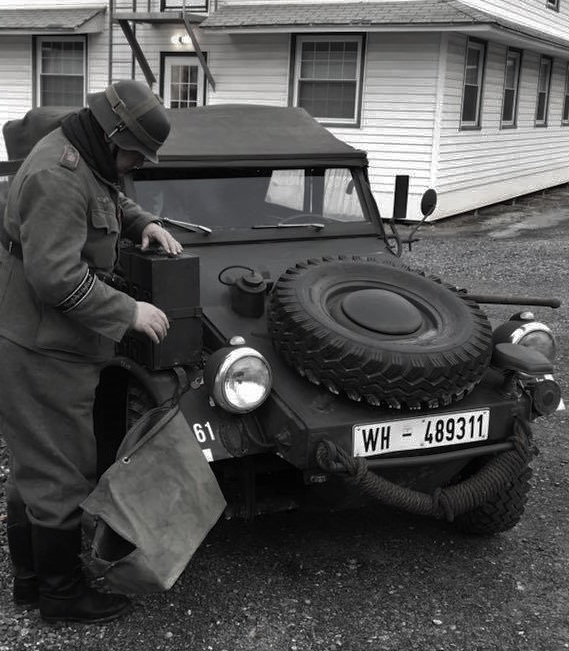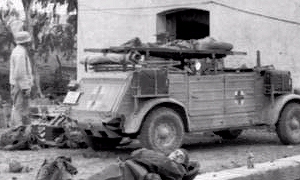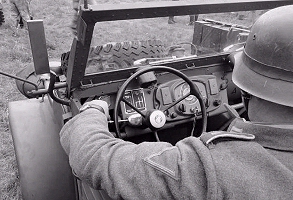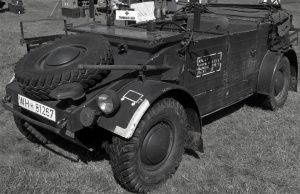Kübelwagen
Kübelwagen is an abbreviation of Kübelsitzwagen meaning bucket-seat car which is the type of seat the prototypes had before the addition of doors. There were 50,435 Kübelwagens made between 1940 and 1945 in Stadt des KDF-Wagens, now known as Wolfsburg – current Headquarters of Volkswagen. Pre-productions models of this vehicle were used in the invasion of Poland in September of 1939. The Wehrmacht approached Ferdinand Porsche to design an inexpensive, light-weight military transport vehicle. In order to provide adequate off road performance with only a two-wheel drive, the Army stipulated that it had to have a loaded weight of 950kg (2,090 lbs) which included 4 battle-dressed troops.
One of the most notable features is its smooth, flat underbelly which allows it to propel itself, much like a motorized sled – when its wheels are sinking into sand, snow, or mud. This allows it to follow tracked vehicles with remarkable tenacity. You will see holes on each side of the Kubel under and between the doors. This is for soldiers to insert a metal pole and lift the vehicle if it becomes stuck. The air cooled 985 cc (23.5 bhp) engine proved to be very tolerant of hot and cold climates and was less vulnerable to bullets due to the absence of a radiator. Under winter conditions a specially volatile starting fuel was contained in a small auxiliary fuel tank at the front of the vehicle.




